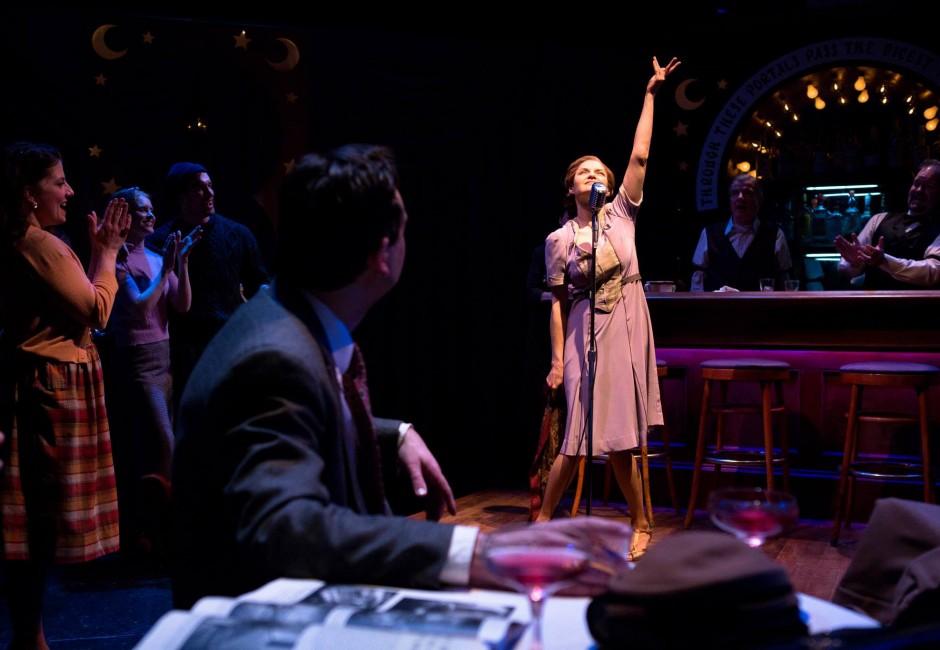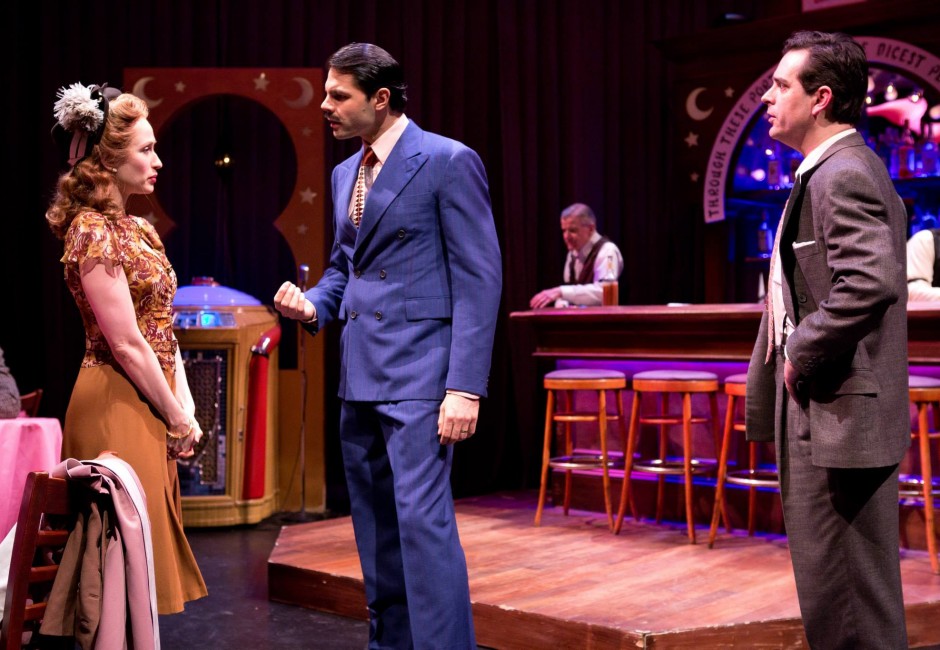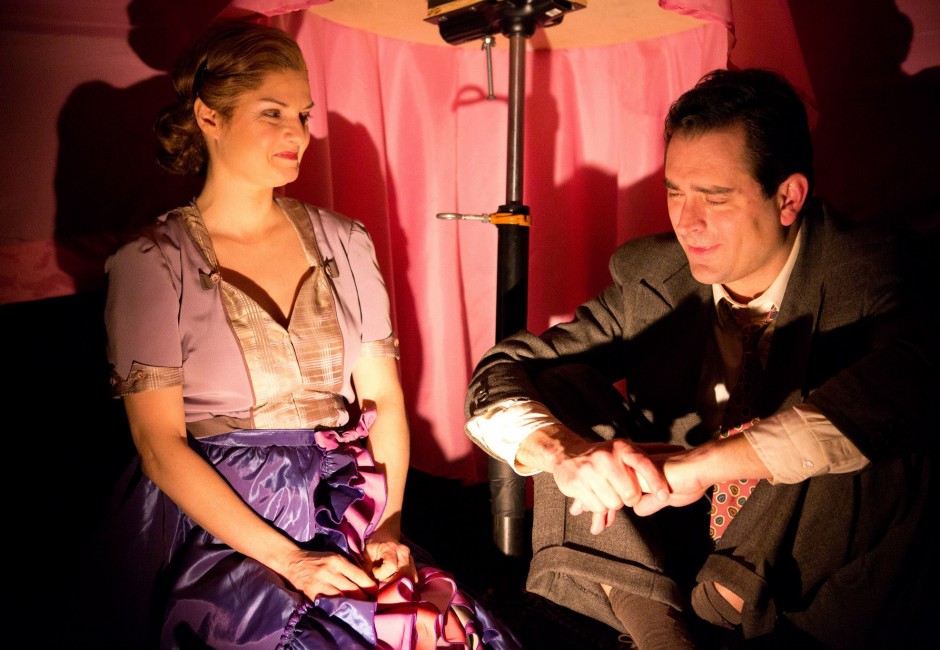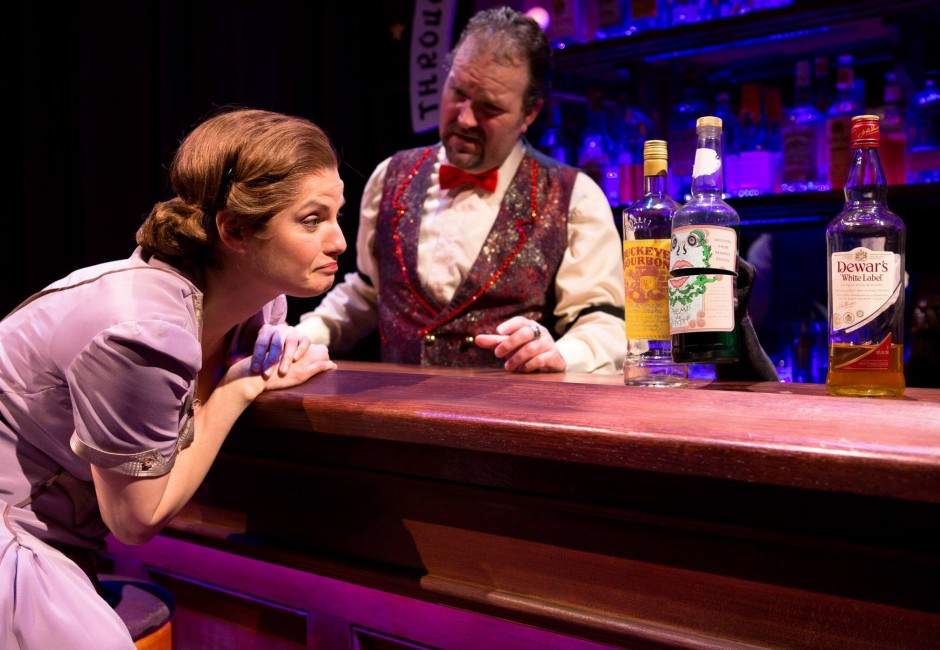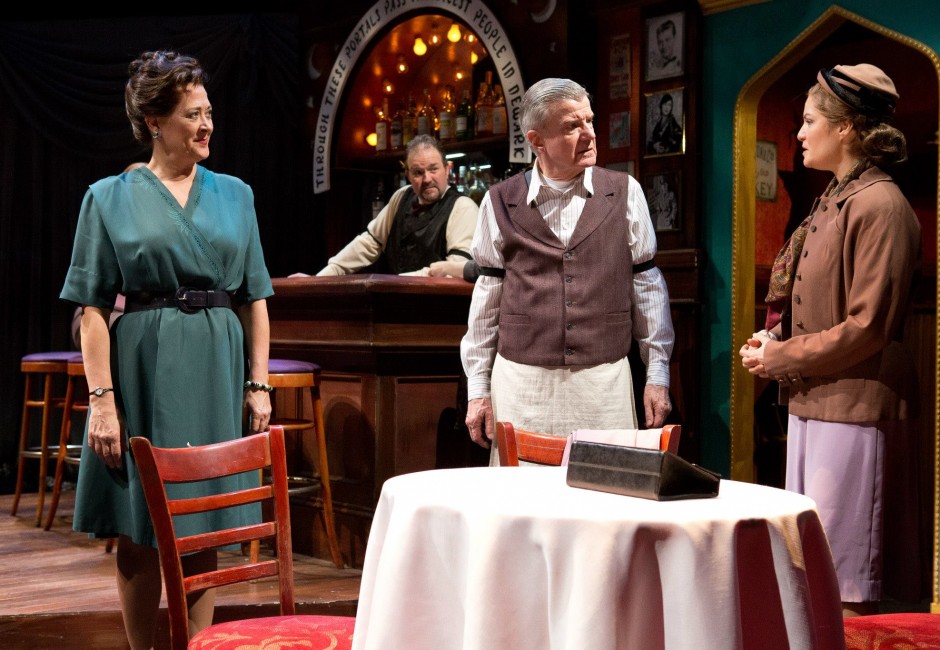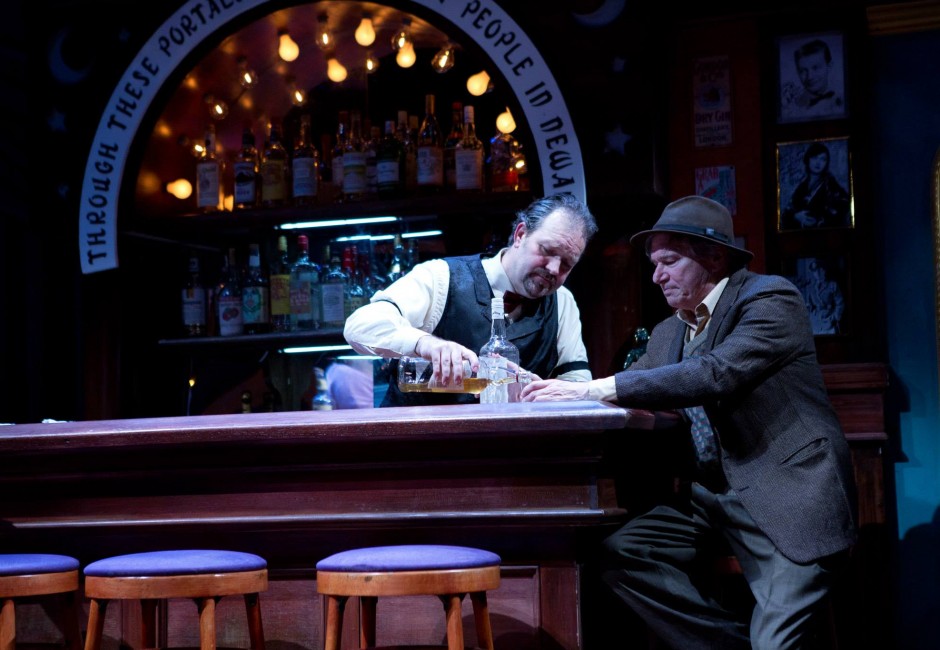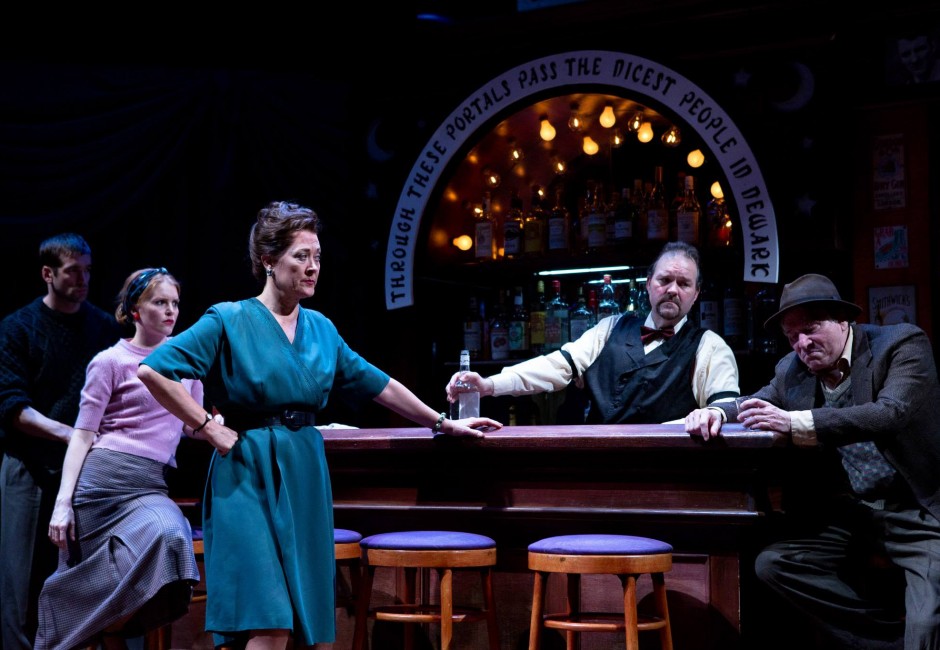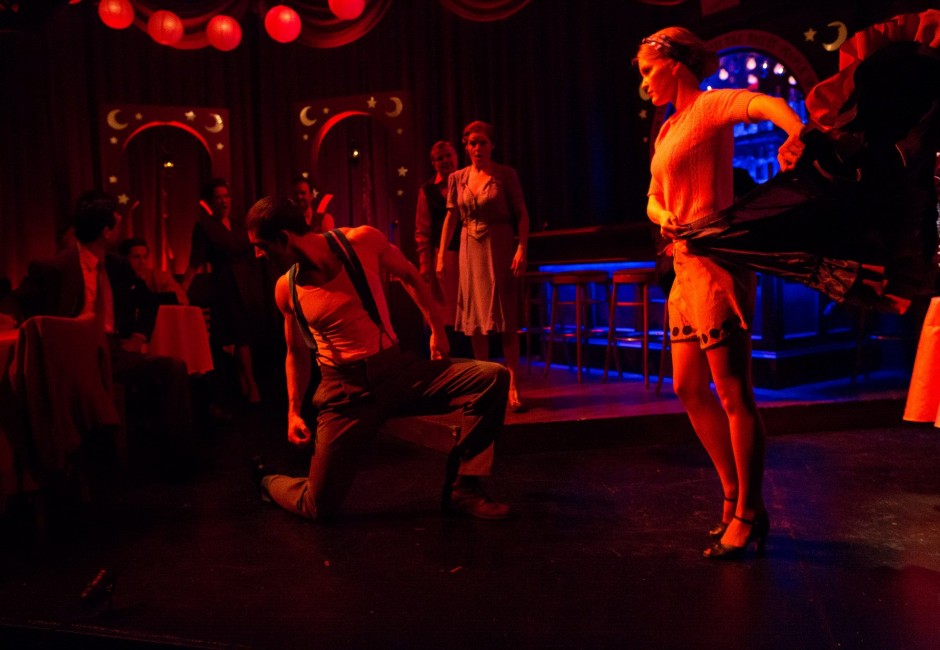Dramaturgy
Anita Loos is a bit of a paradox. Born into a theatrical family in 1888, she became, at twenty-four, one of the first female script writers. In the male-dominated Hollywood, Loos held her own, quickly rising in the ranks to become one of the most highly respected writers in the silent film era. She worked on films by luminaries such as D.W. Griffith and Douglas Fairbanks. In 1925, Loos published her novel “Gentlemen Prefer Blondes”, which turned her into an international sensation and a celebrity writer. Witty, elegant, and stylish, Loos often graced the columns of the popular press. She wrote for the stage with her husband, John Emerson, a director she met at D.W. Griffith’s studio. Loos’s illustrious in the film and on stage continued up through the 50s, when she began to record her incredible life story in a series of memoirs, starting with “A Girl Like I” in 1966. The surface glamour of her life is clear in these memoirs, which recount her adventures, from the jazz age to the present, with the most important personalities of her time. Yet this carefree life masked many difficulties, struggles, and doubts – aspects of her life the Loos preferred to keep close to her chest. That she was able to face and overcome these obstacles, however, only make her journey as an artist and a writer all the more impressive.
Perhaps the central paradox in Loos’s life was her reputation as an independent, free-thinking woman, versus her deep reliance upon men, particularly her husband, John Emerson, an abusive hypochondriac who stole money and credit from Loos, hounded her incessantly, and dragged out divorce proceedings for years. Despite this, he was, in many respects, the love of Loos’s life. In her memoir, “Kiss Hollywood Goodbye,” Loos accepts for herself a derogatory women’s lib term, the “manlover” The contradiction shows itself in many of the comedic romances Loos wrote throughout her life, and it is especially prevalent in “Happy Brithday”, whose central character, Addie, shares some of Loos’s contradictions.
“Happy Birthday” originally opened in 1946, and it marks a major turning point in Loos’s personal and professional lives. Loos’s marriage to Emerson was in one of its roughest patches, and her decision to spend time in New York was partly due to a desire to get away from him while they hashed out the details of their divorce (the divorce never occurred, although the two lived separately until Emerson’s death in 1956). At the same time, Loos found herself released from and exclusive writing contract at MGM, freeing her to write for the stage. An initial plan to do a play entitled “Old Buddha” with Ethel Barrymore fell through, and it looked as though Loos’s career might be nearing its end. Luckily, however, a fateful lunch with Helen Hayes brought Loos back into the public eye.
Loos, who was friendly with Hayes’s husband, Charles MacArthur, learned that the celebrated stage actress was tiring of playing melodramatic roles in costume dramas. Loos mentioned a play she had been toying with for some time, tentatively titled “Blue Lounge”, and Hayes jumped on board based on the promise of getting to “be tight for two acts,” a comic challenge Hayes was delighted to attempt. With Rouben Mammoulian in agreement to direct the piece, it was only a matter of finding the right producers. Lucky for everyone involved, Rodgers and Hammerstein, who had shortly before experienced the massive successes of “Oklahoma!” and “Carousel”, were looking to produce a number of additional shows. As always happens in the theater, scheduling snafus altered the plans and the show was pushed back. Now re-titled “Happy Birthday” and directed by Joshua Logan (“Annie Get Your Gun”), the show began an out-of-town tryout in Boston. It nearly closed before New Yorkers even got a chance to see it.
As Logan later recalled, the previews were disastrous. Audiences didn’t understand how to handle Addie, who was adorable and mousy at times, but vicious and nasty at others. Loos, with her persistent confidence, charm, and craftsmanship, labored on the play day after day, refining and revising the script until Addie emerged as a fully realized and fully sympathetic character. The resulting play was a hit, running for a total of 563 performances. The play won two Tony Awards, for Helen Hayes and cor costume designer Lucinda Ballard. In 1956, the play was adapted for television in a production starring Betty Field.
Examined today, the play is notable not only for its value as raucous entertainment, but as an unusually candid display of behavior typically thought of less than elegant. Katherine Hepburn was interested in playing Addie in a film version, but the censor board objected to a film where the main character becomes increasingly sloshed, viewing it as a glorification of alcohol consumption. To a modern audience, Addie’s alcohol intake can also be somewhat disturbing, especially considering her father is an abusive drunk. Loos was not, however, writing a moral tract, nor is the play intended as a realistic social commentary, although embedded within the comedy are a few rather poignant statements about human nature, love, and overcoming inhibitions.
At its heart, “Happy Birthday” is a Cinderella story, a fable about the role fantasy plays in our lives. Much is made of Addie’s expensive shoes, which mirror Cinderella’s slippers. She is, in essence, a poor girl who dolls herself up for the ball in order to win her Prince Charming. Her father takes on the role of the evil stepmother, his presence proving the major obstacle to Addie’s attempt to find love. She moves from rags to riches, and while there is no midnight deadline, it is clear that her alcohol-induced giddiness will wear off at some point, bringing her lovely magical evening to an end. It is the fantasy of the ball that brings new meaning to the drab, daily reality she must face and, ultimately, holds the promise to release her from that reality. Real life can be a bore, and by bringing the audience along with Addie on her bender, Loos displays a remarkable theatricality and an ingenious number of stage devices that spark with vitality and energy.
Loos also retained her own vitality until the end. She spent her 70s penning her memoirs, including “Twice Over Lightly” in 1972, an ode to New York City she co-wrote with Helen Hayes, who became a lifelong friend after “Happy Birthday.” There was also a brief attempt at this time to turn “Happy Birthday” into a musical with a book by Loos. The project, which went though two composer teams and a number of potential starts, including Shirley MacLaine and Mary Martin, never got off the ground. The final years of Loos’s life were happy ones. She passed away in 1980 at the ripe old age of 93. In typical fashion, Loos requested that her funeral be a “cheery affair,” full of funny stories and music. The many celebrities who spoke and sang eulogies included Jule Styne, Ruth Gordon, Lillian Gish, and showing the important place “Happy Birthday” played in Loos’s life, Joshua Logan and Helen Hayes. Now, during TACT’s own very special 20th birthday, is the perfect time for New York audiences to rediscover “Happy Birthday.” The play fits squarely into TACT’s mission of rediscovering plays from the past. Anita Loos is a writer ripe for rediscovery, and her brand of sharp, biting comedy is, like the Jersey Mecca Cocktail Lounge, a wonderful antidote to a rainy day. Come in, have a warm drink, and enjoy the high-spirited world of “Happy Birthday!”
